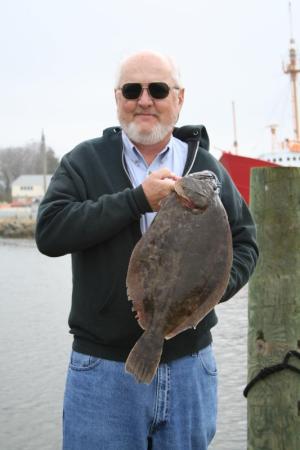The 2024 summer flounder regulations have been settled, and they are entirely different from those proposed by the National Oceanic and Atmospheric Administration. In my opinion, they are much better.
The new rules allow us to fish for flounder Jan. 1 until May 31 with a 16-inch minimum size and a four-fish bag limit. Then, beginning June 1 and continuing until Dec. 31, we can keep four flounder with a minimum size of 17.5 inches.
While this will keep flounder fishing open all year and allow for a good spring fishery, it will be hard on folks who fish the Back Bays during the summer. Finding a 17.5-inch flounder in Indian River or Rehoboth bays during June, July or August is difficult. I also fear the release mortality will be high, as the water temperature in those areas will be quite warm.
So how did we come up with these regulations that are different from the ones proposed by NOAA? The representatives from each natural resources agency in Delaware, Maryland, Virginia and the Potomac River area came together to work out a plan that met the 28% reduction ordered by NOAA. This is what they came up with.
Once June 1 rolls around and the minimum size goes to 17.5 inches, anglers should switch to much bigger baits. While it is true that elephants do eat peanuts, big flounder would much rather eat big baits.
When it comes to catching big flounder, nothing beats a live spot or menhaden. Most of the newer boats have a live well, and catching live spot either in a trap or by hook and line on a Sabiki rig is the way to go. If you are proficient with a cast net, catching a live well full of menhaden should not be a problem.
Big flounder like to hang out around wrecks and other difficult terrain. Presenting a live bait to them is not an easy task and requires a delicate touch by the angler. I use a fish-finder rig and try to keep the sinker out of the structure while letting the bait swim as close as possible to the bottom. I like a bait-casting reel because I can keep it in free-spool, and when a fish takes the bait, I can let it run with very little resistance. I always use a circle hook, so when I engage the reel, the flounder is hooked.
If you don’t have live bait, then dead bait will have to do.
A big bucktail with a strip of squid or fresh fish can draw the attention of a flounder. Work it the same as a live bait, just above a wreck or rough bottom.
I have found whole squid packaged all nice and cleaned at the local Food Lion for a reasonable price. Rigged with two hooks and a sinker, I believe they would look very alive. Nomad has come out with artificial squid lures in sizes that should get down to the deepest flounder. Once again, I have not seen them in person, but in the ads they look good enough for the biggest flounder to eat.
Finally, you can try deep jigging. From my experience, it has not been very productive for flounder or sea bass. That could be operator error. I am new to this technique, and I may not have it down correctly, but so far, I have not had much luck with a jig on the sea bass and flounder grounds.
I do foresee one problem. Once we change from a 16-inch to a 17.5-inch size limit, there will be lots of people who will continue to fish small baits in shallow water as they always have. They are going to catch small flounder that will be released, and some of those fish will die. These anglers have small boats like I do, and they can’t get out to deep water where the larger flounder live. While fishing large baits might produce the occasional 17.5-inch fish, it will be a long time between bites.
I do take my 16-foot tin boat out to Site 10 in the ocean and Site 8 in the bay, but I don’t recommend doing so until you learn how and when to run Indian River Inlet and the same for Roosevelt Inlet.
Last year, we saw an increase in the number and size of croaker in Delaware Bay as well as Indian River Bay. They may not be as glamorous as flounder, but they are fun to catch and make great eating at a fish fry.
Another fish that seemed to be recovering last year was the weakfish or trout. Of course, you can only keep one, but a nice 6 -or 7-pounder would certainly make my day.
























































